 Home > News > Industry News>Animal manure carbonization: the process of converting waste into biochar
Home > News > Industry News>Animal manure carbonization: the process of converting waste into biochar
Animal manure carbonization: the process of converting waste into biochar
Industry News / Date:May 27, 2025
Animal manure carbonization uses the principle of biomass pyrolysis, which is heated in an oxygen-free environment and the water evaporates; when a specific temperature threshold is reached, the organic compounds in animal manure, such as protein, cellulose and hemicellulose, will undergo thermal decomposition, and volatile gases such as methane, carbon monoxide and hydrogen will be produced, while the remaining solid matter will be converted into solid carbon, i.e. biochar. Next, we will introduce you to the specific process and product application of animal manure conversion into biochar in detail.
1. Manure carbonization process
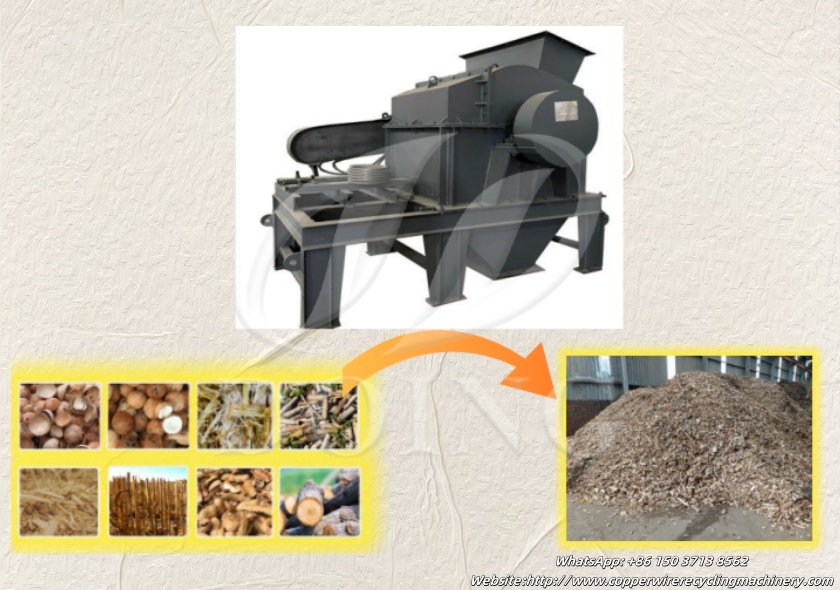 Dryer and Crusher of animal manure carbonization equipment
Dryer and Crusher of animal manure carbonization equipment
Pretreatment: Freshly collected animal manure usually has a high water content. It is first pre-treated by natural drying or a manure dehydrator, and then dried by a DOING dryer. Subsequently, a crusher is used to break the animal manure into smaller particles, usually less than 1 cm, for subsequent processing.
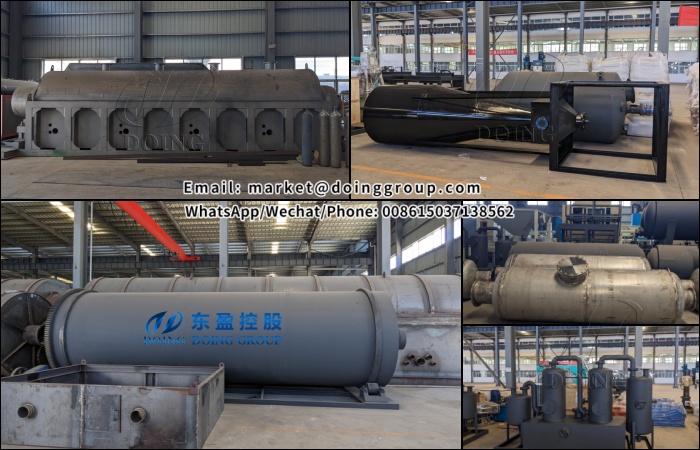 Animal manure carbonization furnace
Animal manure carbonization furnace
Carbonization: The pretreated animal manure is sent to an oxygen-free horizontal rotary carbonization furnace. The temperature and time need to be precisely controlled. The low-temperature pyrolysis stage (200℃~400℃) realizes the dehydration and de-volatilization of organic matter, and the high-temperature carbonization stage (400℃~600℃) can generate biochar in as short as 30 minutes. DOING has modular carbonization equipment, and the specific process parameters can be adjusted dynamically and in time according to the moisture content of animal manure.
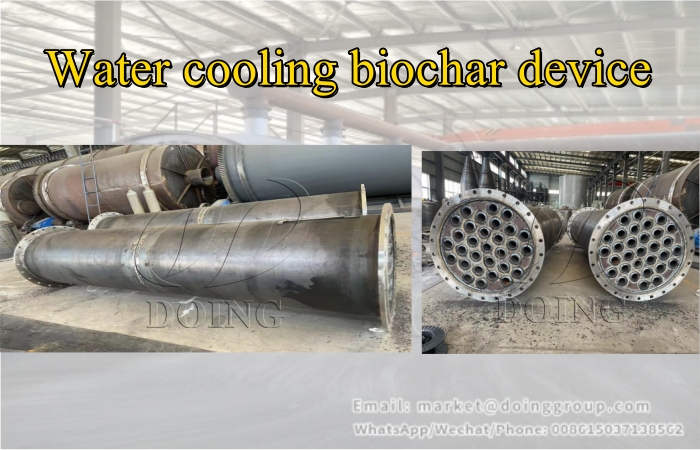 Water cooling biochar device of carbonization equipment
Water cooling biochar device of carbonization equipment
Post-processing: After leaving the carbonization furnace, the products of animal manure carbonization include biochar, residual volatile gases and solid impurities. First, a water-cooled circulation device is used to reduce the temperature of the biochar to prevent it from spontaneous combustion. Then, a screening device is used to screen the biochar to remove uncarbonized impurities, thereby obtaining a high-purity, uniform-size biochar product. The volatile gases generated during the carbonization process are treated by the sachlon dust removal and tail gas purification tower and then sent to the chimney for discharge. Some of these gases can be used as fuel to power the carbonization process and realize energy recycling.
2. Product characteristics
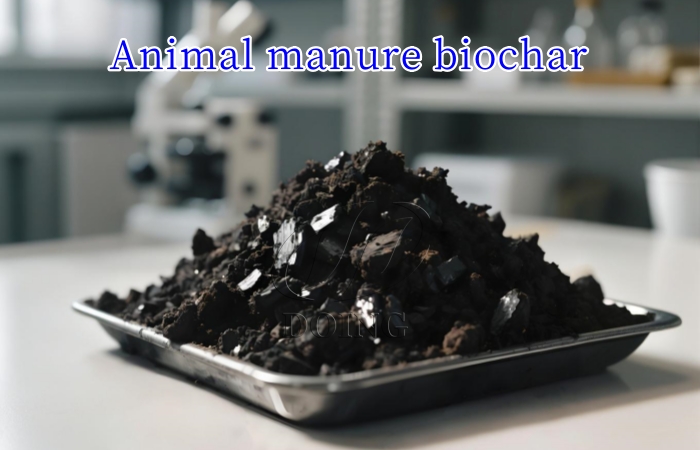 Animal manure biochar
Animal manure biochar
Biochar: The biochar obtained after carbonization of animal manure has a high carbon content, usually between 40% and 60%. Its surface is rich in microporous structure and has a large specific surface area, so it has good adsorption properties. In addition, biochar also contains a certain amount of nutrients required for plant growth, such as nitrogen, phosphorus, potassium, etc.
Combustible gas: The main components of the combustible gas generated during the carbonization process include methane, hydrogen, carbon monoxide, etc. These gases can be used as clean energy for power generation or heating.
3. Specific applications of biochar
 Applications of animal manure biochar
Applications of animal manure biochar
Agricultural applications
a. Soil improvement: Biochar can optimize the soil structure of farmland, enhance fertility and water retention capacity, and create an ideal growth environment for crops (such as increasing yield and quality in poor soil).
b. Fertilizer efficiency improvement: Mixed with organic fertilizer made from fermented animal manure, it can further enhance fertilizer efficiency and promote sustainable agricultural development.
Environmental protection benefits
a. Carbon sequestration: Biochar generated by carbonization of each ton of animal manure can sequester about 0.5-1.2 tons of carbon dioxide, helping to reduce carbon emissions.
b. Pollution control:
Water purification: Use adsorption characteristics to treat industrial/domestic wastewater and remove harmful substances.
Soil remediation: Adsorb and fix pollutants such as heavy metals in the soil to promote ecosystem restoration.
c. Hygiene and safety: The carbonization process kills pathogens and parasite eggs in feces, removes odors, and reduces environmental and health risks.
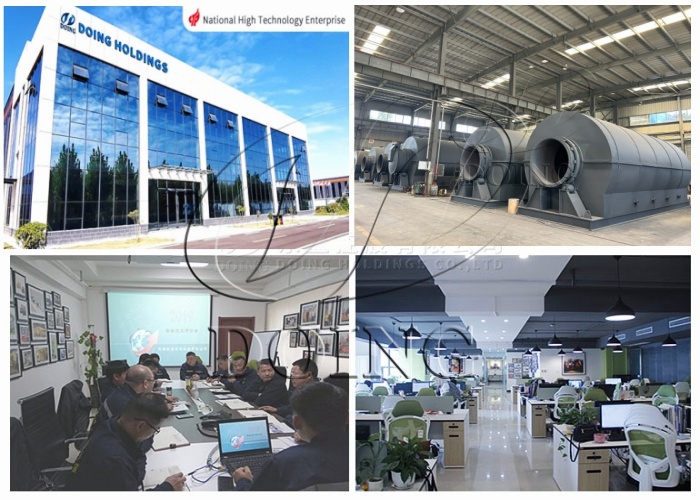 DOING biochar carbonization equipment manufacturer
DOING biochar carbonization equipment manufacturer
The above are the specific steps and product applications of animal manure carbonization. If you are considering investing in carbonization equipment, DOING can provide you with pre-sales site selection, on-site installation during sales, and after-sales remote technical training, providing you with a full range of solutions and quotations for converting animal manure into saleable biochar.
Request Information
Send your inquiry for further information




